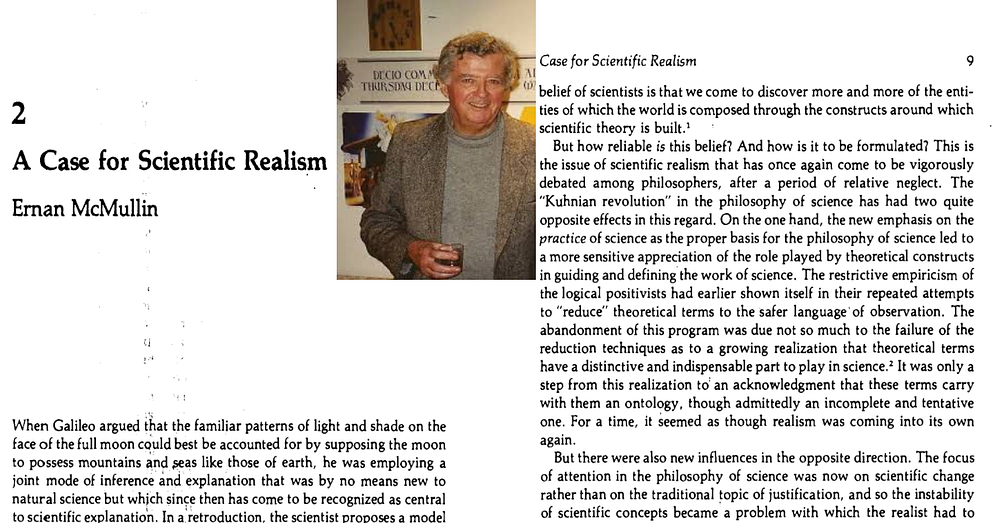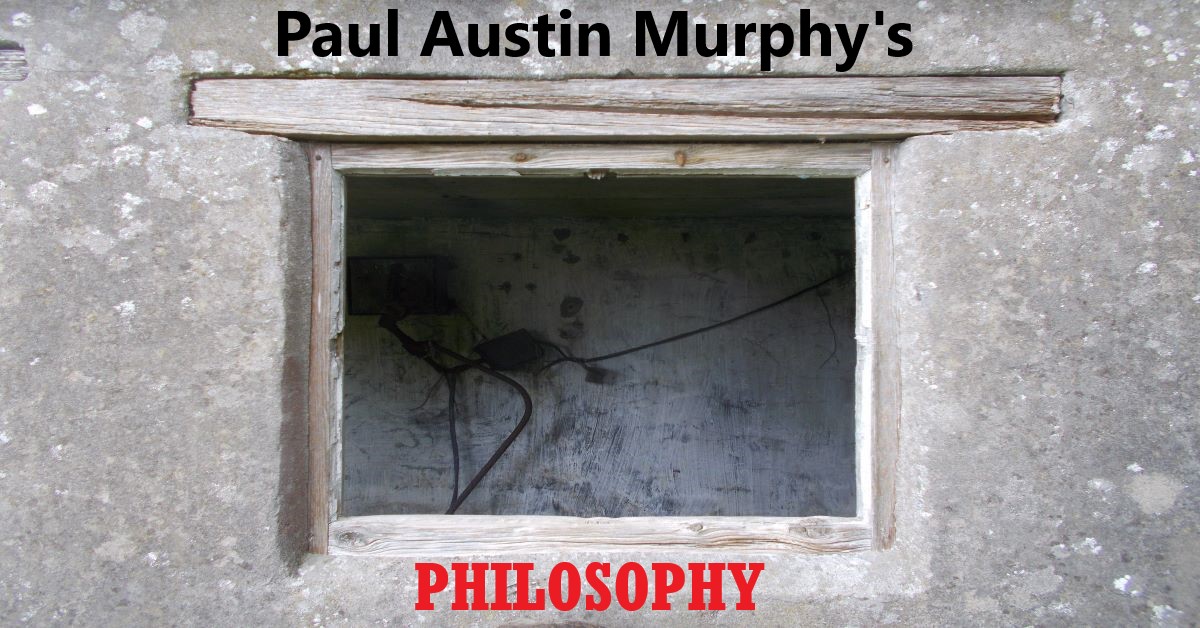The philosopher Ernan McMullin didn’t believe that the “acceptance of a scientific theory [also] involves the belief that it is true”. Moreover, “to suppose that a theory is literally true would imply that no further anomaly could arise”. And surely such a stance on truth is counterproductive in science.

The Irish philosopher Ernan McMullin (1924 — 2011) was the O’Hara Professor of Philosophy Emeritus at the University of Notre Dame. He was a philosopher of science who wrote on theology, cosmology, values in science, Darwinism, etc. McMullin was also a Catholic priest and an expert on Galileo.
*******************************
Karl Popper (1902–1994) once argued that the notion of truth is counter-productive in science because the attainment of complete truth (even if possible in principle) would bring the (or a) scientific story to an end. Instead, Popper argued for what he called verisimilitude.
[As one source defines verisimilitude: “In philosophy, verisimilitude (or truthlikeness) is the notion that some propositions are closer to being true than other propositions.”)
The main problem here is that it can be argued that the notion of complete truth is actually contained (or embedded) within the notion of verisimilitude. Ernan McMullin (in his ‘A Case for Scientific Realism’) made this point when he wrote that the
“term ‘approximate truth’ [] is risky because it immediately invites questions such as: how approximate, and how is the degree of approximation to be measured?”.
In order to know that a theory is approximately true, wouldn’t we also need to know what would make it completely true and/or what makes it partly false? And in order to know both those things, wouldn’t we also need to know what the complete truth of that theory is? Moreover, what is a theory’s approximate truth measured against?
On this critical reading, then, there is no approximate truth or verisimilitude at all.
The Canadian philosopher Ian Hacking (in his book The Social Construction of What?) hints at a similar point when he mentions the positions of Thomas Kuhn and the physicist Steven Weinberg. He writes:
“In Structure Kuhn rejected the idea of scientific progress towards some one final vision of the world. What we see in the history of science is progress away from previous beliefs. Weinberg (1996b, 56) quotes some of Kuhn’s later writing, where Kuhn had said ‘it’s hard to imagine… what the phrase ‘closer to the truth’ can mean.’ [].”
One doesn’t need to be be a Kuhnian to agree that the phrase “closer to the truth” is both problematic and odd. So perhaps it should never be taken literally (i.e., it should be taken poetically or even rhetorically). But, of course, in the cases mentioned in this essay at least, the phrase is taken literally.
Ernan McMullin added to all this when he wrote the following:
“I do not think that acceptance of a scientific theory involves the belief that it is true. Science aims at fruitful metaphor and at ever more detailed structure. To suppose that a theory is literally true would imply, among other things, that no further anomaly could, in principle, arise from any quarter in regard to it.”
It can be doubted that McMullin actually knew that no scientist believes that his own and other scientific scientific theories are true. That’s because there are many scientists who have used the word “truth” — if perhaps sometimes loosely — about their own and other scientists’ theories.
So perhaps McMullin’s position was both philosophical and normative. Indeed the normative and logical elements of his position are encapsulated in his final words:
“To suppose that a theory is literally true would imply, among other things, that no further anomaly could, in principle, arise from any quarter in regard to it.”
On another tact. Strictly speaking, only statements can be true or false. Nonetheless, if a theory is simply seen as a collection of true statements, then its entirety can also be seen as being true due to the fact that all the statements it contains are also true…
Yet scientific theories don’t really work like that.
Even though theories do contain statements, not all its statements are either true or false. (Strictly speaking, then, perhaps they aren’t statements at all.) Some statements involve predictions, probabilities, conjectures (or speculations), reference to “unobservables” and whatnot. Only few of the statements (or expressions) which make up most theories will have a purely (as analytic philosophers put it) truth-conditional content.
In addition, it’s also clear that what McMullin referred to as “fruitful metaphor[s]” can’t be true or false either.
What McMullin also seems to have argued is that a “worldly structure” shows itself only slowly — over time. Each successive theory about the (same?) structure comes… well, closer to the truth. (This is the position of scientific structuralism.) However, since this is ongoing process concerning theories about structure x, then no single theory of x can ever be said to be conclusively true.
McMullin then gave an example of a worldly structure.
He stated that “[s]cientists in general accept the quantum theory of radiation”. He then asked: “Do they believe it to be true?” McMullin concludes:
“Scientists are very uncomfortable at this use of the word ‘true’ because it suggests that the theory is definitive in its formulation.”
In other words, scientists don’t need to classify (or even see) their theories as being true. Indeed it can even be said — and it has been said — that scientists don’t need truth at all. Instead, a scientist can “accept an explanation as the best available”. Moreover, “one accepts a theory as a good basis for further research”.
All that said, some readers may detect truth — even complete truth — lurking underneath all these words, arguments and positions.








No comments:
Post a Comment